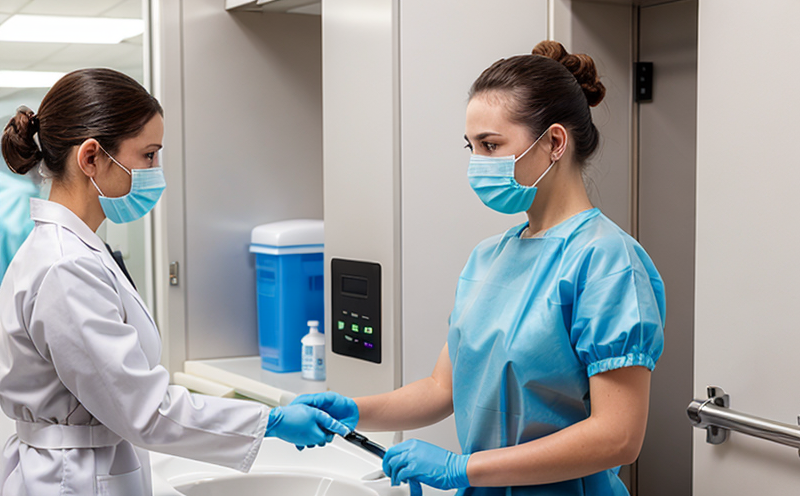AATCC 100 Assessment of antibacterial finishes on textile materials
The AATCC (American Association Textile Chemists and Colorists) Test Method 100, titled "Evaluation of Antibacterial Activity," is a widely recognized standard for assessing the effectiveness of antimicrobial finishes applied to textile materials. This test method provides a standardized approach that allows manufacturers, quality managers, compliance officers, R&D engineers, and procurement professionals to evaluate whether textile products meet specific antibacterial performance requirements.
Textiles with antimicrobial properties can be found in a variety of applications including healthcare fabrics, personal care items, athletic wear, and home textiles. The effectiveness of these finishes is crucial for maintaining hygiene, especially in environments where the potential for bacterial contamination is high. AATCC 100 helps ensure that textile products meet consumer expectations regarding cleanliness and safety.
The test involves exposing a specific volume of a test solution to a known quantity of bacteria on the sample fabric. The reduction in bacterial count after a specified contact time determines the antibacterial efficacy of the finish. This method is versatile, allowing for testing on various types of textiles such as woven fabrics, knitted materials, and nonwovens.
Proper specimen preparation is critical to ensuring accurate test results. Samples should be cut into pieces measuring approximately 5 cm x 5 cm, with a thickness of about 1 mm. It is essential that the samples are representative of the finished product and free from any contamination. The specimens must also be conditioned according to AATCC Standard Test Method 31 for conditioning textiles.
The test solution used in this procedure typically consists of a nutrient agar, which provides nutrients necessary for bacterial growth. The bacteria used can vary depending on the type of textile being tested; however, common organisms include Escherichia coli and Staphylococcus aureus. After inoculating the specimen with these microorganisms, it is incubated under appropriate conditions to allow bacterial colonization.
The next step involves treating the samples with an antimicrobial agent according to manufacturer instructions or industry standards like ISO 17604. Following treatment, additional steps include rinsing and drying the specimens as per AATCC guidelines to simulate real-world usage scenarios. Finally, the treated samples are re-inoculated with fresh cultures of bacteria.
| Test Parameters | Description |
|---|---|
| Sample Preparation | Cutting specimens into 5 cm x 5 cm pieces, conditioning according to AATCC Standard Test Method 31. |
| Treatment Method | Treating samples with an antimicrobial agent as per manufacturer instructions or ISO standards. |
| Incubation Conditions | Inoculating specimens with bacteria and incubating them at appropriate temperatures for optimal growth. |
| Rinsing and Drying | Following treatment, rinsing and drying samples according to AATCC guidelines. |
| Re-Inoculation | Re-inoculating treated specimens with fresh bacterial cultures. |
The results of the test are expressed as a percentage reduction in bacterial count compared to untreated controls. This value indicates how well the antimicrobial finish performs under specified conditions. Compliance with this standard ensures that textile products meet stringent hygiene standards, thereby enhancing consumer confidence and product longevity.
Why It Matters
The AATCC 100 Assessment is crucial for several reasons:
- It provides a standardized approach to evaluating the effectiveness of antimicrobial finishes on textiles.
- Ensures that textile products meet consumer expectations regarding cleanliness and safety.
- Helps manufacturers comply with regulatory requirements in various industries.
- Promotes innovation by offering benchmarks for improving product performance.
Incorporating AATCC 100 into a company’s quality control process enhances brand reputation, fosters customer trust, and ensures long-term success in competitive markets. By adhering to this standard, businesses can demonstrate their commitment to delivering high-quality products that meet stringent hygiene standards.
Scope and Methodology
The scope of AATCC 100 includes the evaluation of antibacterial activity on various types of textile materials. This test method covers both woven fabrics, knitted materials, and nonwovens. It is applicable to a wide range of products including healthcare textiles, personal care items, athletic wear, and home textiles.
| Test Method | Description |
|---|---|
| Sample Preparation | Cutting specimens into 5 cm x 5 cm pieces, conditioning according to AATCC Standard Test Method 31. |
| Treatment Method | Treating samples with an antimicrobial agent as per manufacturer instructions or ISO standards. |
| Incubation Conditions | Inoculating specimens with bacteria and incubating them at appropriate temperatures for optimal growth. |
| Rinsing and Drying | Following treatment, rinsing and drying samples according to AATCC guidelines. |
| Re-Inoculation | Re-inoculating treated specimens with fresh bacterial cultures. |
The methodology involves exposing a specific volume of test solution containing bacteria to the textile sample. The reduction in bacterial count after contact time determines the effectiveness of the antimicrobial finish. Results are reported as percentages, indicating how much bacterial growth was inhibited by the treated fabric compared to untreated controls.
Competitive Advantage and Market Impact
- Innovation Leader: Compliance with AATCC 100 positions companies at the forefront of hygiene standards, enabling them to stay ahead in competitive markets.
- Better Consumer Trust: Demonstrating commitment to high-quality products builds trust among consumers and stakeholders.
- Regulatory Compliance: Ensuring that textile products meet stringent hygiene requirements helps companies avoid potential legal issues and penalties.
- Increased Sales: Products meeting AATCC 100 standards are more likely to attract customers seeking hygienic textiles, thereby boosting sales.
AATCC 100 is a benchmark for textile manufacturers looking to ensure their products meet the highest hygiene standards. By incorporating this test method into their quality control processes, companies can enhance brand reputation and foster long-term customer satisfaction.





